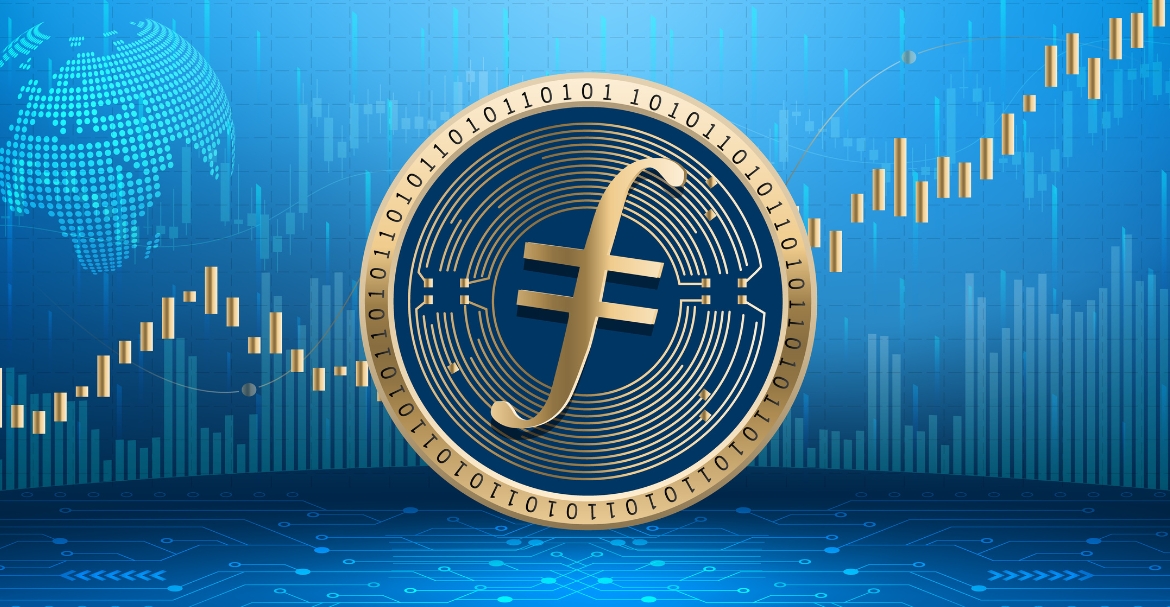-
 Bitcoin
Bitcoin $102,163.2697
6.02% -
 Ethereum
Ethereum $2,150.5881
19.90% -
 Tether USDt
Tether USDt $1.0002
-0.01% -
 XRP
XRP $2.2816
8.03% -
 BNB
BNB $621.9127
3.90% -
 Solana
Solana $160.9056
10.18% -
 USDC
USDC $0.9999
-0.01% -
 Dogecoin
Dogecoin $0.1919
12.84% -
 Cardano
Cardano $0.7428
12.87% -
 TRON
TRON $0.2549
2.81% -
 Sui
Sui $3.9413
20.96% -
 Chainlink
Chainlink $15.6333
15.00% -
 Avalanche
Avalanche $21.5896
11.76% -
 Stellar
Stellar $0.2857
10.70% -
 Shiba Inu
Shiba Inu $0.0...01415
12.36% -
 Bitcoin Cash
Bitcoin Cash $418.6912
17.25% -
 UNUS SED LEO
UNUS SED LEO $8.8588
1.73% -
 Pi
Pi $0.6406
10.47% -
 Hedera
Hedera $0.1918
10.27% -
 Toncoin
Toncoin $3.2151
7.17% -
 Hyperliquid
Hyperliquid $23.1281
10.85% -
 Litecoin
Litecoin $93.2866
5.66% -
 Polkadot
Polkadot $4.3578
11.64% -
 Monero
Monero $297.8483
6.26% -
 Dai
Dai $1.0002
0.00% -
 Bitget Token
Bitget Token $4.4492
5.91% -
 Ethena USDe
Ethena USDe $1.0003
-0.04% -
 Pepe
Pepe $0.0...01078
32.09% -
 Bittensor
Bittensor $417.8303
16.87% -
 Uniswap
Uniswap $5.6674
18.46%
does filecoin use ipfs
Filecoin and IPFS, intertwined technologies, form a decentralized data storage and distribution ecosystem, ensuring reliable, efficient, and immutable data management.
Nov 06, 2024 at 03:36 pm

Filecoin and IPFS: A Symbiotic Alliance in Data Storage and Distribution
Unveiling the Interwoven Nature of Filecoin and IPFS
In the realm of decentralized data storage and distribution, two prominent technologies, Filecoin and the InterPlanetary File System (IPFS), have emerged as complementary forces, shaping the future of data management. This article delves into the intricate relationship between Filecoin and IPFS, exploring how they synergistically power a robust ecosystem for secure and efficient data storage and retrieval.
IPFS: The Foundation of Decentralized Data Sharing
IPFS, a distributed hash table (DHT), serves as the underlying protocol for Filecoin. It provides a decentralized content addressing system that assigns unique content identifiers (CIDs) to data objects. These CIDs facilitate efficient data retrieval, enabling users to access content from multiple nodes simultaneously.
IPFS operates on a peer-to-peer (P2P) network, where every node stores a portion of the distributed data. This distributed architecture eliminates single points of failure, ensuring data availability and resilience. Furthermore, IPFS leverages content addressing, whereby data is referenced by its content rather than its location, fostering data immutability and authenticity.
Filecoin: Incentivizing Data Storage and Retrieval
Filecoin, built upon IPFS, takes data storage and distribution to the next level by introducing an economic incentive mechanism. It creates a decentralized marketplace where users can lease storage space on the Filecoin network, ensuring reliable data storage over extended periods.
Filecoin nodes, also known as miners, provide storage and retrieval services through a proof-of-replication mechanism. Miners are rewarded with FIL, the native cryptocurrency of Filecoin, when they successfully store and prove the availability of data. This incentive structure promotes data reliability and ensures the longevity of stored data.
Synergistic Relationship Between Filecoin and IPFS
The harmonious interplay between Filecoin and IPFS lies in their complementary roles:
- Data Storage: Filecoin provides a robust and reliable decentralized data storage solution, powered by its economic incentive mechanism that encourages nodes to store and replicate data for extended periods.
- Data Distribution: IPFS, with its DHT architecture and P2P network, enables efficient data retrieval and distribution, ensuring fast and reliable access to stored data across multiple nodes.
- Developer Ecosystem: The integration of Filecoin and IPFS has spurred the development of a vibrant ecosystem of tools and applications, empowering developers to leverage decentralized data storage and distribution capabilities in various applications.
Conclusion
Filecoin and IPFS are two pillars of the decentralized data landscape, forming a synergistic alliance that revolutionizes data storage and distribution. Their combined power creates a decentralized, secure, and efficient ecosystem that empowers users to store and retrieve data with confidence. As the adoption of decentralized technologies continues to grow, the symbiotic relationship between Filecoin and IPFS will undoubtedly play a pivotal role in shaping the future of data management.
Disclaimer:info@kdj.com
The information provided is not trading advice. kdj.com does not assume any responsibility for any investments made based on the information provided in this article. Cryptocurrencies are highly volatile and it is highly recommended that you invest with caution after thorough research!
If you believe that the content used on this website infringes your copyright, please contact us immediately (info@kdj.com) and we will delete it promptly.
- Bitcoin Jumps Above $100,000 for the First Time Since Early February
- 2025-05-09 04:15:11
- Bitcoin Tops $100,000 on Fresh Optimism
- 2025-05-09 04:15:11
- FloppyPepe (FPPE) Is Ready to Outperform Shiba Inu (SHIB) With an Anticipated 4,500% Rally
- 2025-05-09 04:10:12
- The crypto market has seen a surge in new meme coins. They are mainly from three chains: Ethereum, Solana, or Base.
- 2025-05-09 04:10:12
- Dragoin's Stage 2 Presale Is Now Live, Offering 6700% ROI
- 2025-05-09 04:05:12
- Bitcoin (BTC) Price Has Surged Past $100,000 Again But For The First Time Since January 2025
- 2025-05-09 04:05:12
Related knowledge

What is Ethereum’s Slashing mechanism and how to punish malicious behavior?
Feb 20,2025 at 03:08am
Key PointsOverview of slashingDifferent types of slashing in EthereumIncentives and consequences of slashingIdentifying and reporting slashed validatorsOngoing discussions and potential improvementsEthereum's Slashing Mechanism: Punishing Malicious BehaviorEthereum's slashing mechanism is an essential tool for ensuring network security and punishing mal...

What is the verifier node of Ethereum and how to become a verifier?
Feb 19,2025 at 06:00pm
The Verifier Node of Ethereum: A Comprehensive GuideKey Points:What is a Verifier Node?How to Become a Verifier NodeResponsibilities and Rewards of a Verifier NodeMinimum Requirements for Becoming a Verifier NodePotential Difficulties in Running a Verifier Node1. What is a Verifier Node?A Verifier Node is an independent entity on the Ethereum network th...

What is Ethereum’s staking, and how to participate and earn money?
Feb 19,2025 at 04:37pm
Key Points:Understanding Ethereum's Staking MechanismSteps to Participate in StakingBenefits and Rewards of StakingSecurity and Risk ConsiderationsTechnical Requirements and Hardware OptionsPotential Challenges and Troubleshooting TipsFAQs on Ethereum StakingWhat is Ethereum's Staking?Proof-of-Stake (PoS) is a consensus mechanism used in blockchain netw...

What is Ethereum’s DAO (Decentralized Autonomous Organization) and how does it work?
Feb 20,2025 at 03:12am
Key PointsDefinition and Structure of a DAOGovernance and Decision-Making in DAOsBenefits and Use Cases of DAOsChallenges and Limitations of DAOsWhat is Ethereum's DAO (Decentralized Autonomous Organization) and How Does It Work?Definition and Structure of a DAOA Decentralized Autonomous Organization (DAO) is an innovative governance and management fram...

What is Ethereum's multi-signature wallet and how to improve security?
Feb 20,2025 at 02:18pm
Key Points:Understanding the Concept of a Multi-Signature WalletBenefits and Drawbacks of Multisig WalletsRequirements for Setting Up a Multisig WalletStep-by-Step Guide to Generating a Multisig WalletImplementing Strategies for Enhanced Security1. Understanding the Concept of a Multi-Signature WalletA multi-signature (multisig) wallet in the Ethereum e...

What is Ethereum's oracle and how to provide data for smart contracts?
Feb 21,2025 at 01:30am
Key Points:Understanding the concept of oracles in EthereumExploring different types of oraclesDetailed guide on how to provide data for smart contractsAddressing potential challenges and considerationsWhat is Ethereum's Oracle?Oracles are crucial components in the Ethereum ecosystem, enabling smart contracts to access real-world data and off-chain even...

What is Ethereum’s Slashing mechanism and how to punish malicious behavior?
Feb 20,2025 at 03:08am
Key PointsOverview of slashingDifferent types of slashing in EthereumIncentives and consequences of slashingIdentifying and reporting slashed validatorsOngoing discussions and potential improvementsEthereum's Slashing Mechanism: Punishing Malicious BehaviorEthereum's slashing mechanism is an essential tool for ensuring network security and punishing mal...

What is the verifier node of Ethereum and how to become a verifier?
Feb 19,2025 at 06:00pm
The Verifier Node of Ethereum: A Comprehensive GuideKey Points:What is a Verifier Node?How to Become a Verifier NodeResponsibilities and Rewards of a Verifier NodeMinimum Requirements for Becoming a Verifier NodePotential Difficulties in Running a Verifier Node1. What is a Verifier Node?A Verifier Node is an independent entity on the Ethereum network th...

What is Ethereum’s staking, and how to participate and earn money?
Feb 19,2025 at 04:37pm
Key Points:Understanding Ethereum's Staking MechanismSteps to Participate in StakingBenefits and Rewards of StakingSecurity and Risk ConsiderationsTechnical Requirements and Hardware OptionsPotential Challenges and Troubleshooting TipsFAQs on Ethereum StakingWhat is Ethereum's Staking?Proof-of-Stake (PoS) is a consensus mechanism used in blockchain netw...

What is Ethereum’s DAO (Decentralized Autonomous Organization) and how does it work?
Feb 20,2025 at 03:12am
Key PointsDefinition and Structure of a DAOGovernance and Decision-Making in DAOsBenefits and Use Cases of DAOsChallenges and Limitations of DAOsWhat is Ethereum's DAO (Decentralized Autonomous Organization) and How Does It Work?Definition and Structure of a DAOA Decentralized Autonomous Organization (DAO) is an innovative governance and management fram...

What is Ethereum's multi-signature wallet and how to improve security?
Feb 20,2025 at 02:18pm
Key Points:Understanding the Concept of a Multi-Signature WalletBenefits and Drawbacks of Multisig WalletsRequirements for Setting Up a Multisig WalletStep-by-Step Guide to Generating a Multisig WalletImplementing Strategies for Enhanced Security1. Understanding the Concept of a Multi-Signature WalletA multi-signature (multisig) wallet in the Ethereum e...

What is Ethereum's oracle and how to provide data for smart contracts?
Feb 21,2025 at 01:30am
Key Points:Understanding the concept of oracles in EthereumExploring different types of oraclesDetailed guide on how to provide data for smart contractsAddressing potential challenges and considerationsWhat is Ethereum's Oracle?Oracles are crucial components in the Ethereum ecosystem, enabling smart contracts to access real-world data and off-chain even...
See all articles




















































































